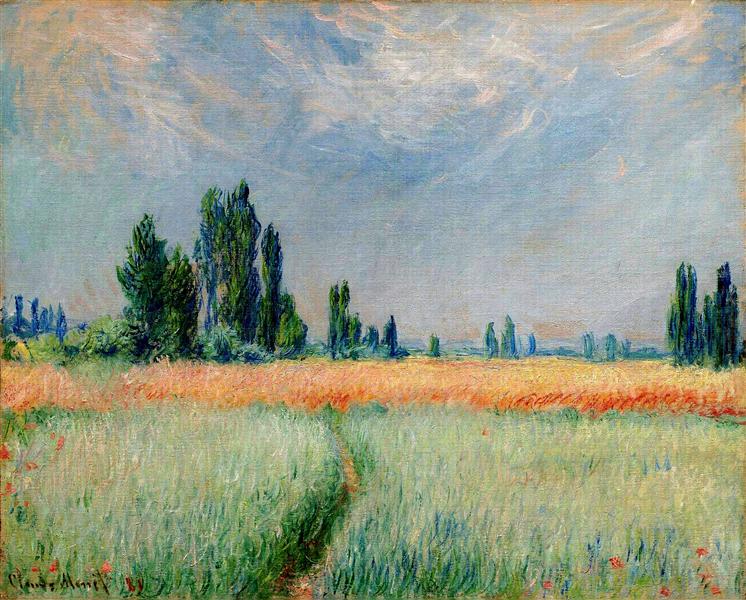説明
Claude Monet's "The Wheat Field", painted in 1881, is a gem of Impressionism that encapsulates its author's mastery in the representation of light and nature. In this painting, Monet offers a serene and vibrant view of a wheat field, whose immensity unfolds through an exceptional handling of color and texture. This painting is a palpable testament to Monet's fascination with rural landscapes and the dynamics of harvested fields under the changing light of day.
The composition of the work is remarkable in its simplicity and effectiveness. Yellow wheat spreads across the central and almost lower part of the painting, its golden ears contrasting with the blue sky and some white clouds. Monet uses a color scheme that oscillates between these warm yellows and cool blues, creating a visual dialogue that evokes feelings of calm and prosperity. The loose, gestural brushwork, typical of Impressionism, allows light to filter and shine through the layers of pigment, generating a luminosity that seems almost alive.
In terms of characters, this work lacks prominent human figures. However, the setting does hint at the presence of agricultural activity, perhaps suggesting the work being done in the field, although Monet's brushwork is more focused on nature than action. This approach simply highlights the landscape as a subject worthy of admiration, rather than as a backdrop for human life.
"The Wheat Field" is part of a series of works that Monet created in this landscape format, where he explores various light conditions and atmospheres. This type of exploration of nature and light is also found in other of his works, such as "The Water Lilies" or "The Cathedral of Rouen". As Monet assimilates the essence of Impressionism, his landscapes show how nature can evoke a deep emotional experience, beyond a mere visual representation.
This painting fits into the broader context of Monet's artistic practice, which has been instrumental in the evolution of Impressionism. His focus on light, colour and the perception of the moment is present in The Wheat Field, where each brushstroke contributes to a sense of movement and fluidity. The golden fields are a testament to the splendid rural nature of France, and reflect Monet's transition to a looser, more lyrical style as his career progressed.
Looking at The Wheat Field, it is easy to understand why Monet remains an icon of Impressionist art. The technical mastery and his ability to capture the vibrant life of nature invite the viewer into an almost meditative contemplation, where time seems to stand still. In this work, Monet does not simply present a landscape, but offers a window into a world where light and color become protagonists, taking the viewer on an intimate and profound sensory experience. The simplicity of a wheat field is transformed, through his genius, into a hymn to the beauty of rural life.
KUADROS ©, a famous painting on your wall.
Hand-made oil painting reproductions, with the quality of professional artists and the distinctive seal of KUADROS ©.
Painting reproduction service with satisfaction guarantee. If you are not completely satisfied with the replica of your painting, we will refund 100% of your money.

